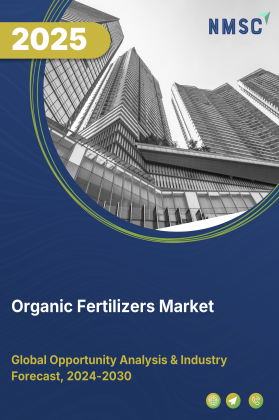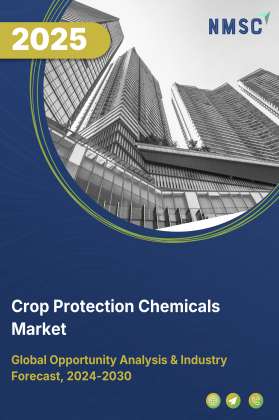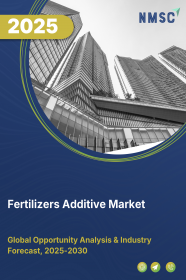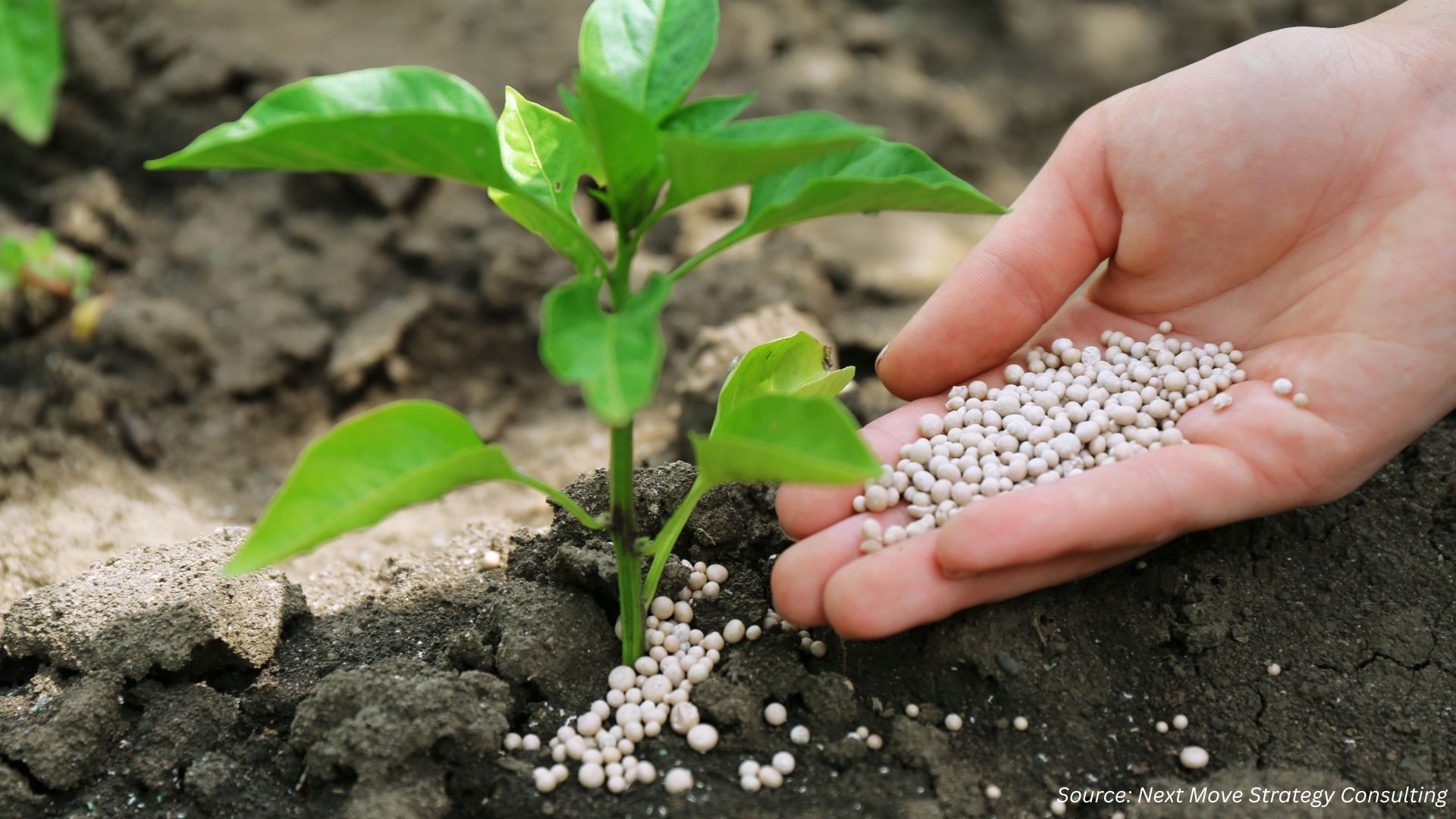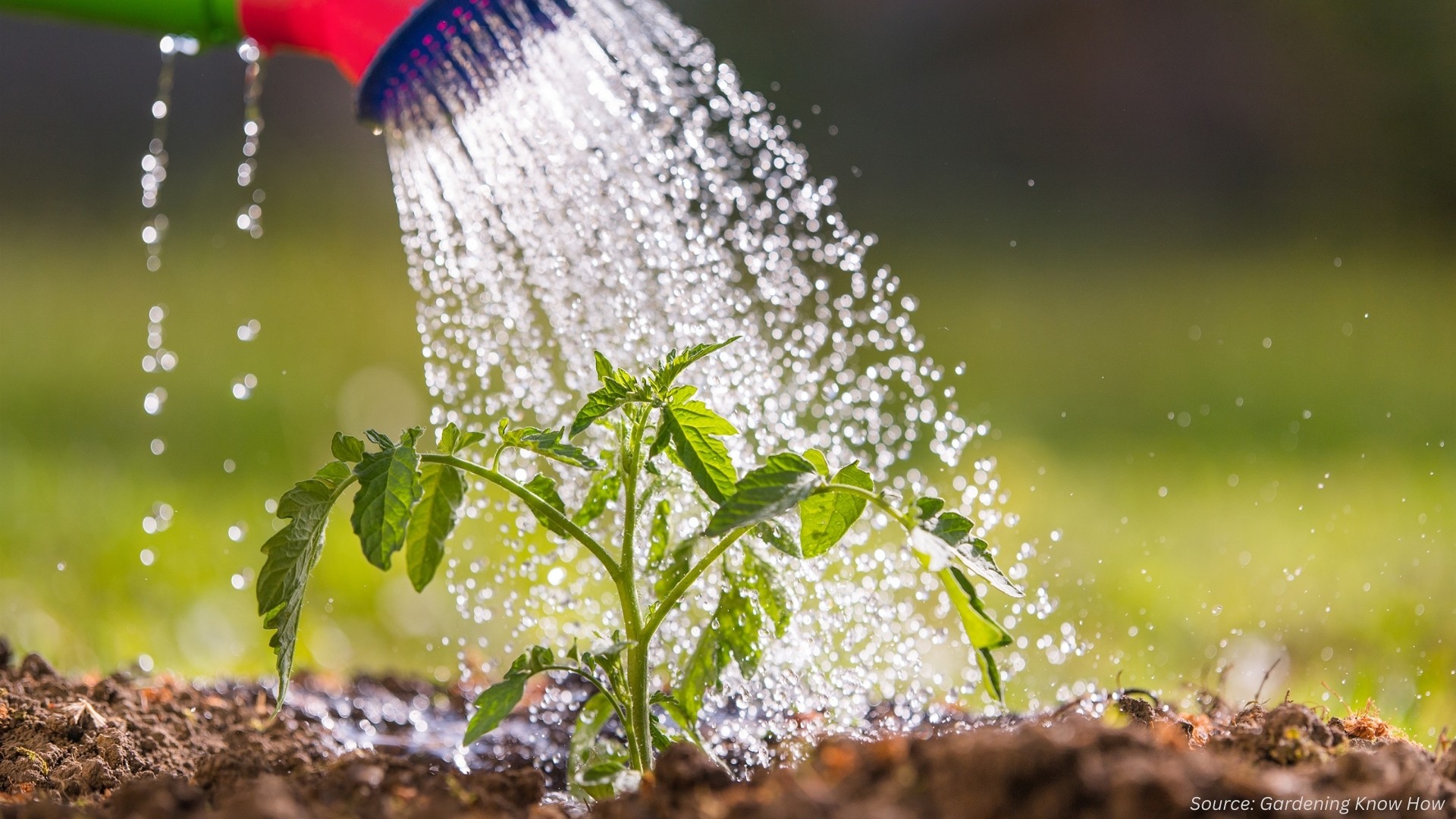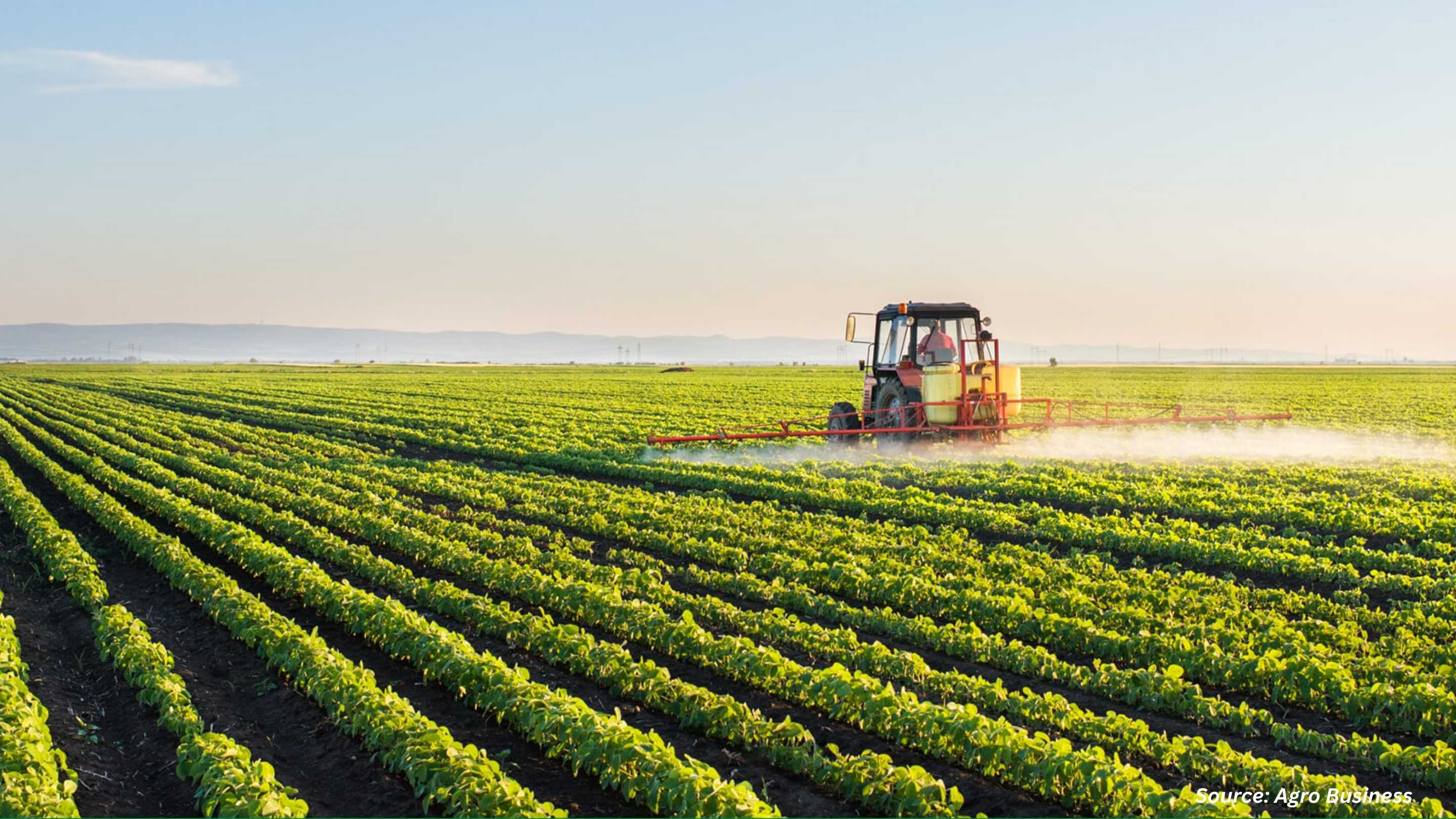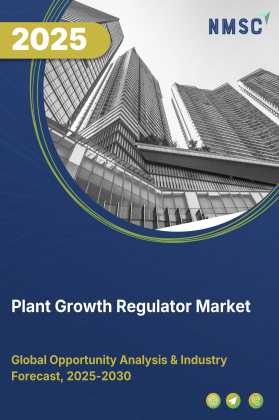
Plant Growth Regulator Market by Type (Auxins, Cytokinins, Gibberellins, Ethylene, Abscisic Acid, Brassinosteroids, Jasmonates, Salicylic Acid, and Others), by Source (Synthetic PGRs and Natural PGRs), by Formulation (Liquid, Granules, Powder, and Others), by Crop Type (Cereals & Grains, Oilseeds & Pulses, Fruits & Vegetables, Turf & Ornamentals, and Others), and by Application Method (Foliar Application, Others) – Global Opportunity Analysis and Industry Forecast, 2025 – 2030
Industry Outlook
The global Plant Growth Regulator Market size was valued at USD 4.95 billion in 2024 and is estimated to reach USD 5.65 billion in 2025 and is predicted to reach USD 10.98 billion by 2030 with a CAGR of 14.2% from 2025-2030. The industry is experiencing robust growth driven by rising global food demand, climate change challenges, and the adoption of modern agricultural practices.
PGRs help farmers enhance crop productivity, optimize growth cycles, and improve stress tolerance, addressing the need for higher yields and resilient crops. Mechanized and precision farming practices are accelerating PGR adoption, integrating them with fertilizers and pesticides to boost efficiency and sustainability.
However, high costs and potential environmental concerns associated with synthetic PGRs pose adoption challenges, particularly for smallholder farmers. Looking ahead, precision agriculture offers significant growth opportunities by enabling targeted application, reducing input waste, and supporting sustainable, high-yield farming worldwide.
Rising Global Food Demand Driving the Market
The market for plant growth regulators is witnessing significant growth due to the increasing global demand for food. PGRs enable farmers to enhance crop productivity, optimize growth cycles, and ensure higher yields, helping to meet the nutritional needs of a growing population.
As per the World Bank, the global population is projected to reach 10 billion by 2050, requiring a 60% increase in food production. Their adoption across various agricultural sectors is accelerating as farmers aim to maximize output and improve crop quality. Overall, the growing food demand is expected to remain a key driver for the sustained market expansion.
Impact of Climate Change Driving Plant Growth Regulator Adoption
Drastic climate change worldwide is influencing the growth of the plant growth regulator market demand by affecting crop productivity. Extreme weather events such as droughts and floods stress plants, reducing both yield and quality. To mitigate these effects, farmers increasingly rely on PGRs to enhance plant resilience and improve stress tolerance.
According to the International Fund for Agricultural Development, over USD 1.28 billion has been invested between 2022 and 2024 to support small-scale farmers in adapting to climate change and producing food sustainably. This highlights climate resilience as a significant driver for PGR adoption.
Rising Adoption of Modern Agricultural Practices Driving the Market Growth
The growing adoption of mechanized farming and precision agriculture is accelerating the use of plant growth regulators (PGRs) worldwide. PGRs are increasingly integrated into crop management systems alongside fertilizers, pesticides, and other agrochemicals, enhancing overall crop productivity and efficiency.
Awareness of their benefits is driving steady adoption across both small- and large-scale farms. This trend highlights the crucial role of PGRs in supporting sustainable and efficient agriculture, making them an essential component of modern farming practices.
High Cost of Adoption Limiting the Market Growth
The adoption of high-quality plant growth regulators (PGRs) is hindered by their initial cost and the investment required in associated application technologies. Smallholder and resource-constrained farmers, particularly in developing regions, find these products expensive compared to conventional farming inputs, limiting widespread adoption. The financial barrier not only restricts market penetration but also slow the uptake of modern agricultural practices that rely on PGRs for enhanced crop productivity.
As a result, the high cost of adoption remains a key restraint in expanding the global plant growth regulator market growth, especially in rural and low-income areas. However, the use of synthetic plant growth regulators raises concerns regarding their potential environmental impact, such as soil and water contamination, limiting their adoption that hinders the growth of the sector.
Precision Agriculture Creating Future Growth Opportunities for the Market
The adoption of precision agriculture is expected to create significant growth opportunities for the plant growth regulator market in the future. PGRs enable farmers to increase crop yield and reduce input costs through targeted and accurate application. By integrating these regulators with precision farming techniques, agricultural waste be minimized, and plants better withstand environmental stresses such as drought or extreme temperatures. This synergy between PGRs and modern farming practices supports sustainable agriculture, enhances productivity, and positions the market for long-term expansion across diverse agricultural sectors worldwide.
Market Segmentations and Scope of the Study
The plant growth regulator market report is segmented on the basis of type, source, formulation, crop type, application, and region. On the basis of type, the market is segmented into auxins, cytokinins, gibberellins, ethylene, abscisic acid, brassinosteroids, jasmonates, salicylic acid, and others. On the basis of source, the market is classified into synthetic PGRs and natural PGRs. On the basis of formulation, the market is divided into liquid, granules, powder, and others. On the basis of crop type, the market is segmented into cereals & grains, oilseeds & pulses, fruits & vegetables, turf & ornamentals, and others. On the basis of application, the market is divided into foliar application, soil application, seed treatment, post-harvest treatment, and others. The regional breakdown includes North America, Europe, Asia-Pacific, and the Rest of the World (RoW).
Geographical Analysis
North America is the fastest-growing region in the plant growth regulator industry, primarily driven by climate change, including temperature fluctuations, droughts, and extreme heat, which negatively impact crop growth. Farmers increasingly depend on PGRs to mitigate these environmental challenges, ensuring optimal crop development and maintaining high yields. The need for adaptive and reliable agricultural solutions is pushing the adoption of advanced growth regulators across the United States and Canada, contributing to the region’s rapid market expansion.
Europe is witnessing steady growth in the plant growth regulator market due to the rising focus on sustainable agriculture and regulatory support for crop productivity enhancement. Farmers are adopting PGRs to improve yield quality, manage flowering and fruit set, and optimize resource utilization.
Countries like France, Germany, and Spain are promoting eco-friendly farming practices, which encourage the use of bio-based and environmentally safe growth regulators. This adoption, combined with technological advancements, is contributing to consistent market growth across Europe.
Asia-Pacific continues to lead the global market, driven by the region's substantial population and increasing food demand. As of 2024, India's population is approximately 1.44 billion, reflecting a growth of about 0.25% from the previous year. This demographic trend underscores the need for enhanced agricultural productivity.
Additionally, the presence of key players, such as Ratnakar India Ltd., which launched a new technical manufacturing unit in India in September 2024, bolsters the region's capacity to produce PGRs and supports advanced crop management practices.
The Rest of the World (RoW), including regions such as Latin America, the Middle East, and Africa, is witnessing growing adoption of plant growth regulators (PGRs) due to rising food demand and the need to address climatic challenges. Countries like Brazil, Mexico, South Africa, and Egypt are increasingly investing in modern farming practices, and PGRs help optimize crop growth, enhance stress tolerance, and improve yield quality.
As awareness of sustainable agriculture grows and agricultural infrastructure develops, these regions are expected to present significant opportunities for market expansion, attracting both local and international PGR manufacturers.
Strategic Innovations Adopted by Key Players
Key players in the plant growth regulator industry are actively pursuing strategies such as product innovation, strategic acquisitions, and international project expansion to strengthen their global footprint and meet evolving industrial demands.
-
In January 2025, Sumitomo Chemical announced the full acquisition of Philagro Holding, S.A. and Kenogard, S.A., expanding its crop protection portfolio.
-
In August 2024, FMC submitted regulatory applications for its new herbicide, Dodhylex™, in eight rice-growing countries, marking the first new mode of action herbicide in over 30 years.
-
In July 2024, BASF announced plans to cease production of glufosinate-ammonium at its Knapsack and Frankfurt sites in Germany by the end of 2024 due to economic reasons.
Key Benefits
-
The report provides quantitative analysis and estimations of the market from 2025 to 2030, which assists in identifying the prevailing industry opportunities.
-
The study comprises a deep-dive analysis of the current and future plant growth regulator market trends to depict prevalent investment pockets in the sector.
-
Information related to key drivers, restraints, and opportunities and their impact on the market is provided in the report.
-
Competitive analysis of the players, along with their market share is provided in the report.
-
SWOT analysis and Porters Five Forces model is elaborated in the study.
-
Value chain analysis in the market study provides a clear picture of roles of stakeholders
Plant Growth Regulator Market Key Segments
By Type
-
Auxins
-
Cytokinins
-
Gibberellins
-
Ethylene
-
Abscisic Acid
-
Brassinosteroids
-
Jasmonates
-
Salicylic Acid
-
Others
By Source
-
Synthetic PGRs
-
Natural PGRs
By Formulation
-
Liquid
-
Granules
-
Powder
-
Others
By Crop Type
-
Cereals & Grains
-
Oilseeds & Pulses
-
Fruits & Vegetables
-
Turf & Ornamentals
-
Others
By Application
-
Foliar Application
-
Soil Application
-
Seed Treatment
-
Post-Harvest Treatment
-
Others
By Region
-
North America
-
The U.S.
-
Canada
-
Mexico
-
-
Europe
-
The UK
-
Germany
-
France
-
Italy
-
Spain
-
Denmark
-
Netherlands
-
Finland
-
Sweden
-
Norway
-
Russia
-
Rest of Europe
-
-
Asia-Pacific
-
China
-
Japan
-
India
-
South Korea
-
Australia
-
Indonesia
-
Singapore
-
Taiwan
-
Thailand
-
Rest of Asia-Pacific
-
-
RoW
-
Latin America
-
Middle East
-
Africa
-
Key Players
-
Bayer AG
-
Corteva, Inc.
-
FMC Corporation
-
Sumitomo Chemical Co., Ltd.
-
UPL Limited
-
Nufarm Limited
-
Valent BioSciences LLC
-
Nippon Soda Co., Ltd.
-
Dhanuka Agritech Ltd.
-
Rallis India Limited (Tata Group)
-
Fine Agrochemicals Ltd.
-
AlzChem Trostberg GmbH
-
SePRO Corporation
Report Scope and Segmentation:
|
Parameters |
Details |
|
Market Size in 2025 |
USD 5.65 Billion |
|
Revenue Forecast in 2030 |
USD 10.98 Billion |
|
Growth Rate |
CAGR of 14.2% from 2025 to 2030 |
|
Analysis Period |
2024–2030 |
|
Base Year Considered |
2024 |
|
Forecast Period |
2025–2030 |
|
Market Size Estimation |
Billion (USD) |
|
Growth Factors |
|
|
Countries Covered |
28 |
|
Companies Profiled |
10 |
|
Market Share |
Available for 10 companies |
|
Customization Scope |
Free customization (equivalent up to 80 working hours of analysts) after purchase. Addition or alteration to country, regional, and segment scope. |
|
Pricing and Purchase Options |
Avail customized purchase options to meet your exact research needs. |

















 Speak to Our Analyst
Speak to Our Analyst



